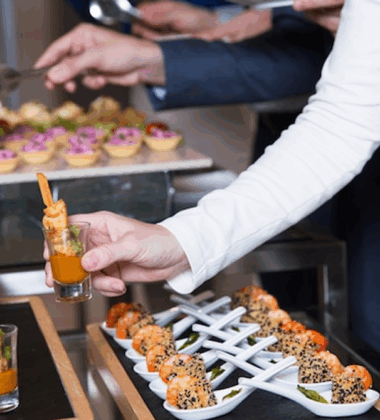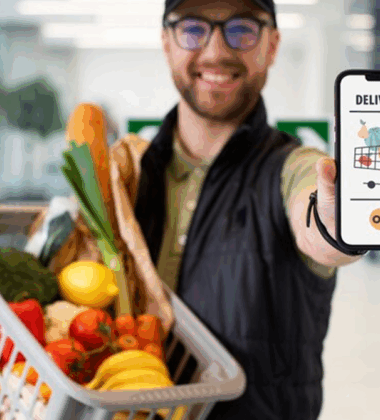In a world saturated with food brands, it’s not enough to be tasty—you have to be memorable. And memory, in the context of modern marketing, is tied to meaning. That’s where food storytelling comes in. More than marketing copy or label language, food storytelling connects your brand to a bigger narrative—cultural, emotional, personal.
At events like the Global Products Expo USA (June 26–28, 2025, at the New Jersey Expo Center), the brands drawing the most attention aren’t necessarily the ones with the largest booths or loudest displays. They’re the ones with a story people can taste.
In this post, we’ll explore food storytelling examples that bring flavor to life—on the plate and in the minds of customers.
Why Storytelling Is the New Branding
Storytelling in F&B is no longer an afterthought. It’s the centerpiece of brand strategy, and the most successful companies are using it to:
- Build trust in crowded marketplaces
- Make abstract values like “sustainability” or “authenticity” tangible
- Engage both logic and emotion
- Create loyalty that lasts beyond the first taste
Flavor alone may earn a first-time buyer. Story keeps them coming back.
What Is Food Storytelling?
Food storytelling is the intentional act of using ingredients, origin, preparation, and presentation to communicate a brand’s identity and values. It links the product to a place, a person, a purpose—or ideally, all three.
This isn’t limited to “farm-to-table” narratives or ancestral recipes. Today, even futuristic lab-grown or highly functional foods are being positioned through story.
Think of it as a sensory brand biography. And the most effective stories are not just told—they’re tasted.
1. Storytelling Through Origin: Where Taste Begins
Example: The Himalayan Honey Cooperative
At the 2024 Global Products Expo, one honey brand didn’t lead with its nutritional value or price point. It led with a story: indigenous women harvesting wild honey on cliffs in the Himalayas. Their booth featured VR headsets showing this process, honey-tasting rituals passed down generations, and a small map showing how every sale supports education programs in their villages.
The taste was raw, wild, floral. The story? Unforgettable.
Brand takeaway: When your ingredients have an origin story, bring it to the forefront. Consumers crave transparency—but they also crave connection.
2. Storytelling Through Identity: Flavor as Culture
Example: Diaspora Spice Co.
Diaspora Spice Co. uses single-origin spices sourced from small farms in India. But what truly sets them apart is how they frame each product as a cultural artifact. Their packaging includes the farmer’s name, the region, the harvest date, and how the spice is traditionally used. Their blog dives into the colonial history of the spice trade—and how they’re disrupting it.
At expos, they pair each spice with storytelling cards, ancestral recipes, and demos from chefs from that region.
Brand takeaway: Flavor can carry cultural memory. Don’t dilute it—lean into it.
3. Storytelling Through Function: Taste That Solves a Problem
Example: NeuroBites
NeuroBites makes snacks designed to support mental clarity and cognitive performance. But what makes them stand out is their narrative approach to function.
Each product is named after a state of mind—“Focus,” “Calm,” “Spark”—and each booth station tells the story of what inspired the formulation: a founder’s struggle with ADHD, long study nights in med school, or research from a breakthrough cognitive science study.
Visitors don’t just taste nootropics—they taste purpose.
Brand takeaway: Functional food storytelling should link to real needs, not just features. Turn formulas into missions.
4. Storytelling Through Packaging: A Canvas for Meaning
Example: LOLA Plant-Based Cheese
LOLA reimagined its packaging as a personal letter from the founder. Each cheese wedge includes a short handwritten note—sometimes a memory of a family picnic, sometimes a recipe from a favorite aunt.
Their booth mirrored this intimacy: a kitchen table, old family photos, and a rotating “story wall” where guests could post their own food memories.
Brand takeaway: Use packaging real estate to invite the consumer into your world. The more personal it feels, the more powerful the connection.
5. Storytelling Through Sampling: Experience as Message
Example: La Flor Botanicals
Instead of giving away generic samples, this herbal beverage company hosted a tasting ritual led by a “flavor guide.” Each tea was linked to a season, a mood, and a sensory metaphor (e.g., “sunlight on river stones”).
Attendees weren’t just drinking—they were entering a moodscape. It was one of the most talked-about booths on social media.
Brand takeaway: Sampling isn’t just about getting your product into mouths—it’s about making that taste moment mean something.
Why It Works: The Psychology Behind Story and Flavor
Food is an emotional experience. We associate flavor with memory, mood, even identity. When you tie your product to a story, you tap into three crucial consumer triggers:
1. Prominence:
A well-crafted story cuts through the noise. People might forget the texture of your product—but they’ll remember how it made them feel, and why.
2. Promise:
Storytelling raises expectations and builds anticipation. “This is more than just a snack—this is a step toward mental clarity.” If the product delivers, loyalty follows.
3. Proof:
A story with detail, authenticity, and emotion proves that the brand cares. It becomes its own form of quality assurance.
How to Craft Your Edible Brand Story
Step 1: Find Your Core Narrative
What’s your “why”? Is it healing through heritage, redefining nutrition, honoring a tradition, disrupting a system?
Step 2: Make It Sensory
Connect your story to smell, texture, flavor, color, and presentation. Let your product reflect the narrative without words when possible.
Step 3: Show the Human Side
Introduce the farmer, the founder, the formulator. Let real people with real voices and lived experiences drive the message.
Step 4: Use Every Medium
Your booth, packaging, website, and product line should all echo the same story from different angles. Repetition deepens retention.
Step 5: Invite the Customer Into the Story
Make your story interactive. Can the customer add to it? Customize it? Share their version?
Who Should Prioritize Food Storytelling?
- F&B startups aiming to carve a niche in crowded verticals
- Exporters and exhibitors entering new markets needing emotional brand bridges
- Functional food brands explaining complex benefits in relatable terms
- Cultural heritage brands preserving authenticity and voice
If you’re showing at the Global Products Expo USA, consider how your story can set you apart in a competitive, international, and fast-moving event landscape.
Final Bite
In the evolving landscape of food branding, taste alone isn’t enough. You need a narrative—something that roots your product in memory and emotion. Whether it’s told through origin, culture, function, or experience, the best stories are the ones people can taste.
The brands that are winning on the expo floor—and in the marketplace—are those that understand this simple truth: flavor is identity, and storytelling is how we make it last.
Before your next product launch or trade show appearance, ask yourself: What story will my product tell the moment someone takes a bite?
If you can answer that—clearly, emotionally, authentically—you’re already ahead of the game.





